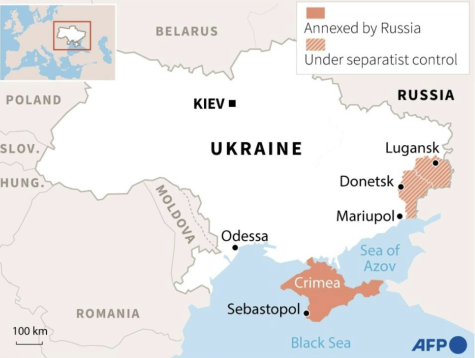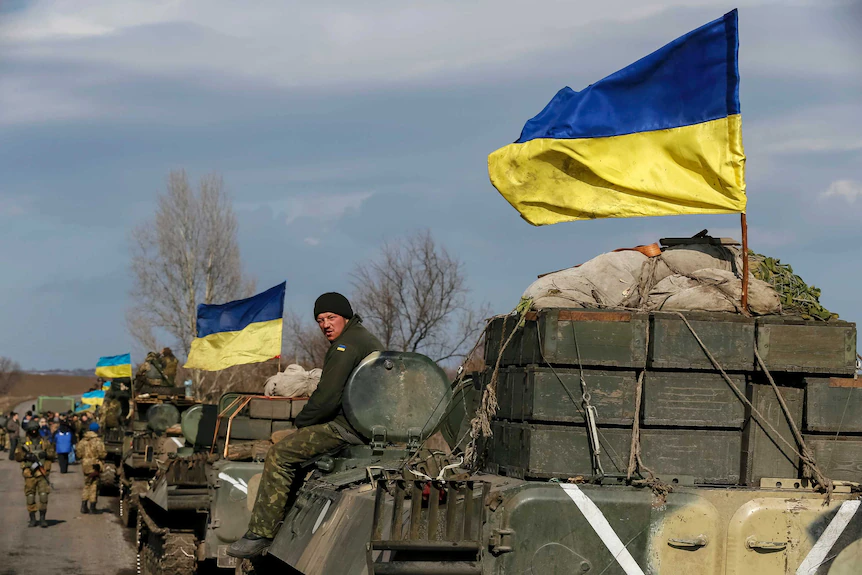Putin His Nose Where It Doesn’t Belong
Russian troops are amassing on Ukraine’s border.
Trains full of Russian military equipment, ranging from tanks to anti-air missile systems to electronic jamming equipment, head West towards Ukraine at a near constant rate. Fiery rhetoric depicting Russia in the strengthening stranglehold of NATO emanates from the Kremlin everyday, and war looms on the horizon.
But why does Russia want to invade Ukraine? What are the reasons for this conflict?
This Isn’t New
Firstly, we have to stipulate that Putin’s recent actions are exceptional.
Tensions between the Kremlin and Ukraine are nothing new. In fact, both countries have been in an on-again-off-again war for the last seven years. In 2014, Russia broke through into Eastern Ukraine, seizing the Crimean peninsula for itself and helping establish the two breakaway Donetsk and Luhansk republics. Since then, more than 13,000 people have died in the conflict, although the frontline has remained mostly static since major fighting subsided in 2015.

However, these prior altercations pale in comparison to what Russia is preparing now. Recently, over 60 battalion tactical groups—over 115,000 troops—have been stationed on the border, with more being shipped in by the day. Trains packed full of military equipment and never-ending columns of tanks head west for the border. Thousands of Russian troops have flooded into Belarus, whose border is a mere two hour drive from Kyiv. At the time of publishing, 6 enormous Russian amphibious assault ships designed for beach landings have begun heading south for the Mediterranean. Russia has called up reservists and begun establishing logistics routes and field hospitals that would be required to support an assault. These moves would not be occurring if the troops were simply participating in regular exercises and training: this is explicit preparation for decisive military action.
Harsh Rhetoric
Additionally, the Kremlin and Russian propaganda machines have spent the last several months beating the drums of war and demonizing Ukraine at every opportunity, both on the international and domestic front. Internationally, Russia has manufactured a faux-crisis that it insists endangers Russia. It has stated that NATO expansion and Western interference in Ukraine pose an “existential threat” to Russia’s existence, and has issued utterly unworkable demands that they claim must be met to avoid a military response. These include a ban on the expansion of NATO, removal of NATO troops from most countries in Eastern Europe, and a permanent ban on Ukraine joining NATO or training with NATO troops. Ironically, NATO is a purely defensive alliance, and does not threaten Russia, or any other nation. Its only function is to guarantee European security.
Russia knows that its demands are unworkable, and they have already been shot down by NATO and the West. However, this was the goal all along. Russia knew well before it issued those demands that no Western leader would agree to them. The true purpose of the demands was to give Russia the pretext for war in Ukraine. By having “attempted” diplomacy and portraying NATO action as aggressive, Russia can state that it is fighting a defensive war it has so laboriously attempted to avoid. Russian deputy foreign minister Alexander Grushko clearly illustrated the application of this pretext when he stated, “We have a set of legal military-technical measures that we will apply if we feel a real threat to (our) security.” By having their demands refused, Russia has given itself a casus belli to invade Ukraine, by making it an issue of Russia’s own geopolitical security, rather than geopolitical gain.
But Why?
But why is Putin doing this? Why invade a country that will undoubtedly be opposed to his presence: whose people are being trained to kill his soldiers to the bloody end. There is no sizable financial or clear gain from any potential invasion. So what does he want? What is his end goal with Ukraine?
Putin famously stated that the collapse of the Soviet Union was “a genuine tragedy” and the “greatest geopolitical catastrophe of the 20th Century.” To make up for this great loss, he aims to restore the status quo in Ukraine and Eastern Europe, both of whom traditionally fell under the Russian sphere of influence. Through the invasion of Ukraine and expansive demands that he has issued NATO, which extend to other former Soviet countries, such as Romania, Bulgaria, and the Baltic states, Putin hopes to regain a sphere of influence in these countries. In addition, Putin views Ukraine and the Ukrainians as part of Russia, and believes that the current government in Kyiv is a Western puppet state, and a military threat on his border. Re-absorbing Ukraine would remove the threat, unite the two peoples under one flag, and restore the influence and control that was lost with the fall of the USSR.
But Putin is a wise leader, and understands that despite all his machinations, Russia will never again wield the power the Soviet Union did. Russia has an economy smaller than Italy’s. The Russian people are poor, and incomes and economic growth have stagnated over the past decade. Russia’s economy is dominated by it’s massive reserves of oil and natural gas, both of which are prone to price fluctuations and are losing popularity in the face of renewable energy. Putin can afford a war when oil is over $80 a barrel, but what about when it slips below a profitable number? It’s not just economic problems that Russia is facing either. Russia has a shrinking population devastated by the COVID-19 pandemic, with over a million excess deaths in 2021 alone. In addition, Russia stands to be severely affected by climate change as the permafrost which covers 70% of its territory warms and melts.
In short, Russia isn’t a superpower like the United States or China, and over the coming years, it will be even farther from being a superpower. Russia is a nation in decline. If Putin wants to make a move and accomplish his geopolitical goals, the clock is ticking. He has to act now.











